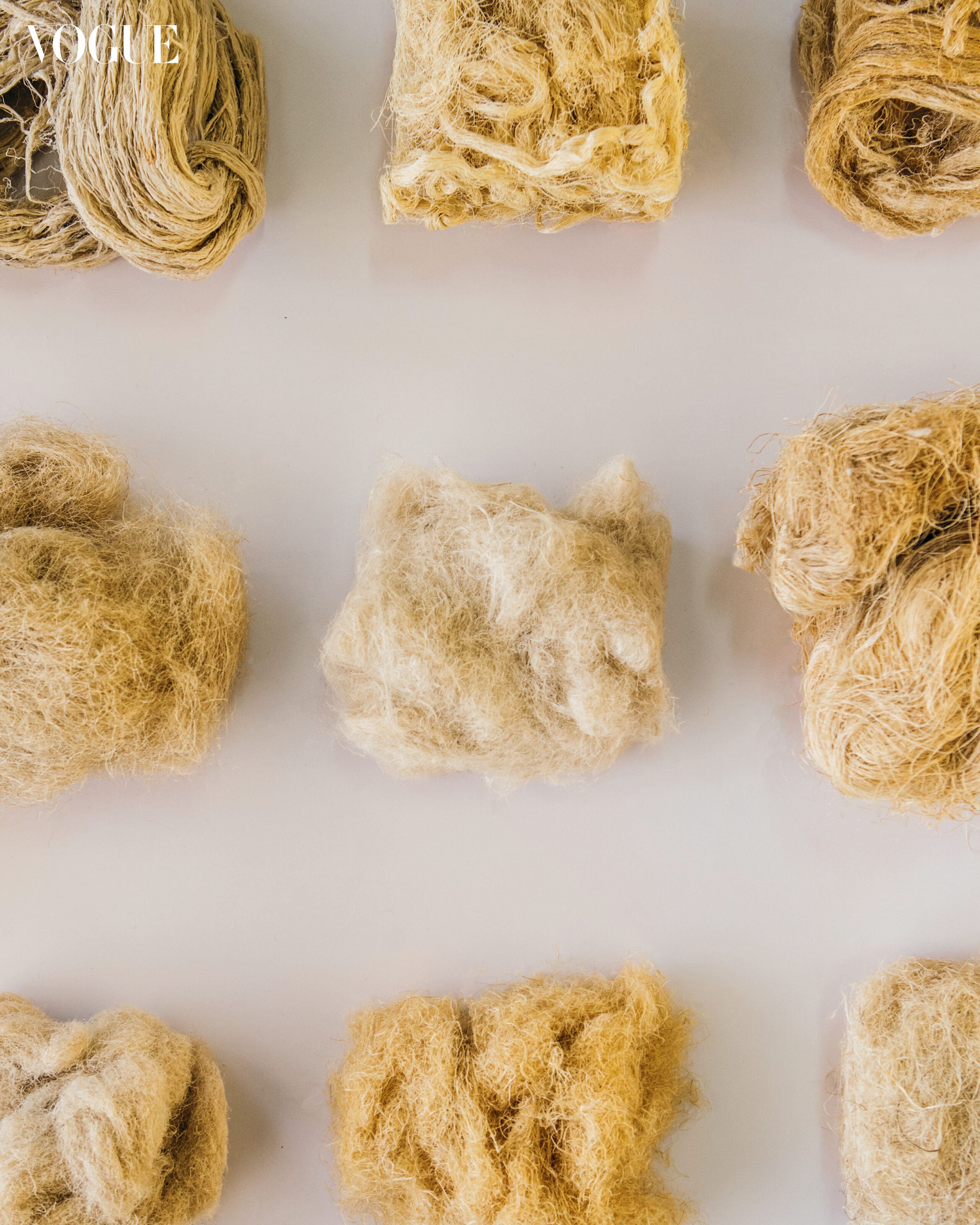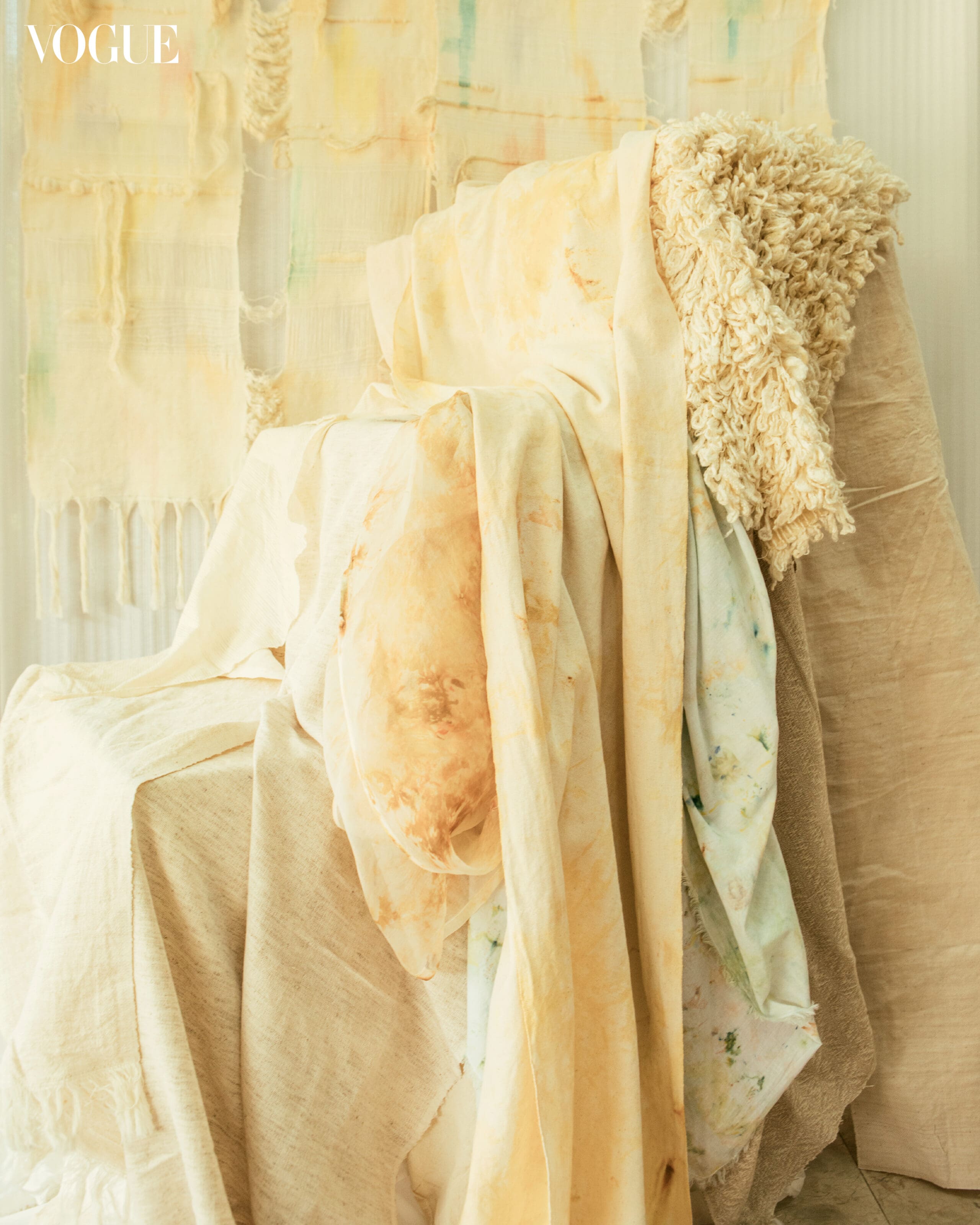Maison Métisse founder Adrienne Charuel. Photographed by Arabella Paner
For Adrienne Charuel of Maison Métisse, the art of weaving started as a respite from a new life in an unfamiliar city, and became a lifeline to her own creative identity.
At Maison Métisse’s booth at the coveted ArteFino artisanal fair, gossamer strands of pineapple fiber greet visitors alongside thick spools of yarn, spun from Iloilo-grown cotton dyed varying shades of warm cocoa. For founder Adrienne Charuel, highlighting the origins of her brand’s handwoven textiles is just as important—if not more so—as displaying their end use.
The phrase “fiber to clothing” best describes the overarching concept of her space at this year’s fair, which earned the distinction of being awarded Best Booth. A feat worthy of celebration considering the festival’s long-held reputation for showcasing only the most creative and innovative Filipino makers.
“Education and raising awareness are a big part of the brand,” Charuel shares, as she walks us through the different fibers laid out on the table before us. “We want people to develop a newfound appreciation and respect for textiles because it really is such an ancient heritage.”

For Charuel, the personal journey to her weaving practice came to her from Japan by way of New York. In 2016, fresh from a stint at ESMOD in Paris, where she had spent years studying “the very gruesome, very specific techniques of French fashion design,” she found herself newly transplanted to New York thanks to her husband’s work. “When we got there, we didn’t really have any family or friends,” she admits. “Personally, it was all a bit hectic. I loved the energy of New York, but I started to look for some kind of escape from the city. Like I needed to hide from the world and have my own time away.” It was during this transitory period that she came across a post online for something called “mindful zen weaving.” Led by curiosity and longing for a reprieve from the city’s endless bustle, Charuel booked herself a class at Loop of the Loom’s weaving studio on the Upper East Side.
Run by a Japanese woman touting the contemporary handweaving philosophy of Saori, Charuel found herself drawn to the meditative nature of her teacher’s “non-technique.” Rather than following a particular pattern, Saori practitioners instead emphasize the freeform, weaving with “a lack of intention.” Founded in 1969 by Misao Jo, an Osaka native in her late 50s, Saori was born essentially from a willingness to not only embrace but also to celebrate one’s mistakes.
“The Japanese have a very precise way of approaching their art. They always have to be the best, to achieve the highest quality,” Charuel says. “The founder of Saori was creating an obi once and she made a mistake. But instead of unraveling the entire thing, she said, ‘Let’s just keep making the same mistake and have that become the design.’ She ended up creating something beautiful by accident.” This idea resonated deeply with Charuel.
“After graduating from design school, it’s not like I knew exactly what I wanted to do. I was still exploring myself. When I took up weaving, I had time to pause my mind and just be okay with who I am without the pressure of what other people think of me. It led me to my creative
identity. I realized I didn’t have to be something that I imagined myself to be.”
This newfound ability to create without expectation or programming provided Charuel with the therapeutic release she had unknowingly been searching for. “I felt so present,” she admits. “You just keep stepping on the pedals of the loom. I love the whole philosophy of it. Of doing something with your hands that connects you to your creative self, even if you didn’t think you had one.”
After working and eventually teaching at that weaving studio, Charuel once again found herself in the midst of another life-changing move, this time back to Manila. It was back home that she began to explore how she could combine this Japanese philosophy with traditional Filipino weaving techniques. “I became curious about our own weaving heritage. I started researching and connecting with local tribes through Manila FAME. I thought of buying existing weaves at first, but then everyone had the same kind of weaves. They’re all beautiful, but as a weaver first, I’m into creating with my own hands. I wanted to explore how I can weave my own textiles using our local fibers.”

After reaching out to the Philippine Textile Research Institute (DOST-PTRI), Charuel began seeking local natural fibers that could be transformed into her own tropical textiles. “I asked, ‘What are the more innovative yarns I can play with?’ I wanted to work with something new and different and see what that translates into.” Among the fibers that stood out were pure Philippine cotton, silk, banana, pineapple, bamboo, and water hyacinth; all locally-sourced from farmers working directly with DOST-PTRI’s yarn centers in provinces from Ilocos to Iloilo. “It’s through them that we learn so much,” Charuel says of her ongoing relationship with DOST-PTRI. “Aside from their yarn centers, we have a co-working space with them right now where I help validate their fibers and hand looms. We’re really focused on how we can innovate the fibers and how wearable they can be.”
The surprising marriage between all of these influences comes to light in Maison Métisse’s growing collection of languid, flowing silhouettes in ethereal washes of muted watercolor. Silk wrap blouses, caftans, and coconut-dyed dresses evoke a sense of sartorial freedom, much like the practice of Saori, shifting and transforming based on the wearer’s intention or mood for the day. “I wanted to make pieces that are timeless. I guess it’s the French influence from when I was living there. They prefer to have capsule closets where you can wear a piece multiple ways,” she says, “Our handwoven tunics can be paired with cream pants or worn solo on the beach. It can be very casual but also very elegant. How you wear it depends on what you want to be that day.”
Another important carryover from her past influences is a focus on both ethical and sustainable practices from top to bottom, such as natural hand dyeing and zero-waste patterns. Ideas which Charuel was more than happy to impart on her modest Maison Métisse team. “Basically it’s just me, two weavers, and one seamstress. We’re a very humble team. I even do all the hand dyeing by myself at home,” she explains. “We try our best to produce in small batches because everything we work with, from the silk to the cotton—there’s a scarcity to it. Which I think makes it a luxury too. Since we can’t produce a lot, production takes more time. And because we work with natural fibers, it’s not easy to weave with them. You have to be very gentle and respect the fibers.”
Upon contemplation, Charuel admits that she sees Maison Métisse as still being in its R&D phase. And for all intents and purposes, she prefers to keep her practice that way. Free-flowing, open, adaptable. “We just go as we can. We’re still discovering which yarns to work with. Since there’s no consistent supply, we work around what we have. Just like our farmers, we harvest what we can, and find a way to make something out of it,” she says. “If we can’t source more of something for the moment, we move on and try something else. We’re not restricted to anything. It allows us to just flow and be mindful.”
Photographed by Arabella Paner, assisted by Gia Palamos, styled by Neil De Guzman, produced by Bianca Zaragoza, sittings editor: Ticia Almazan